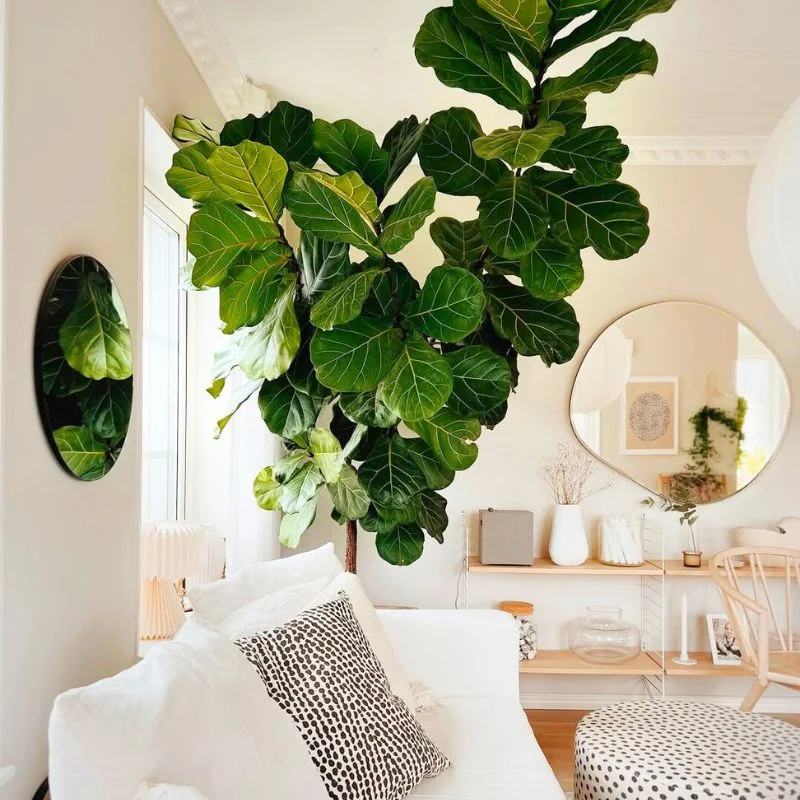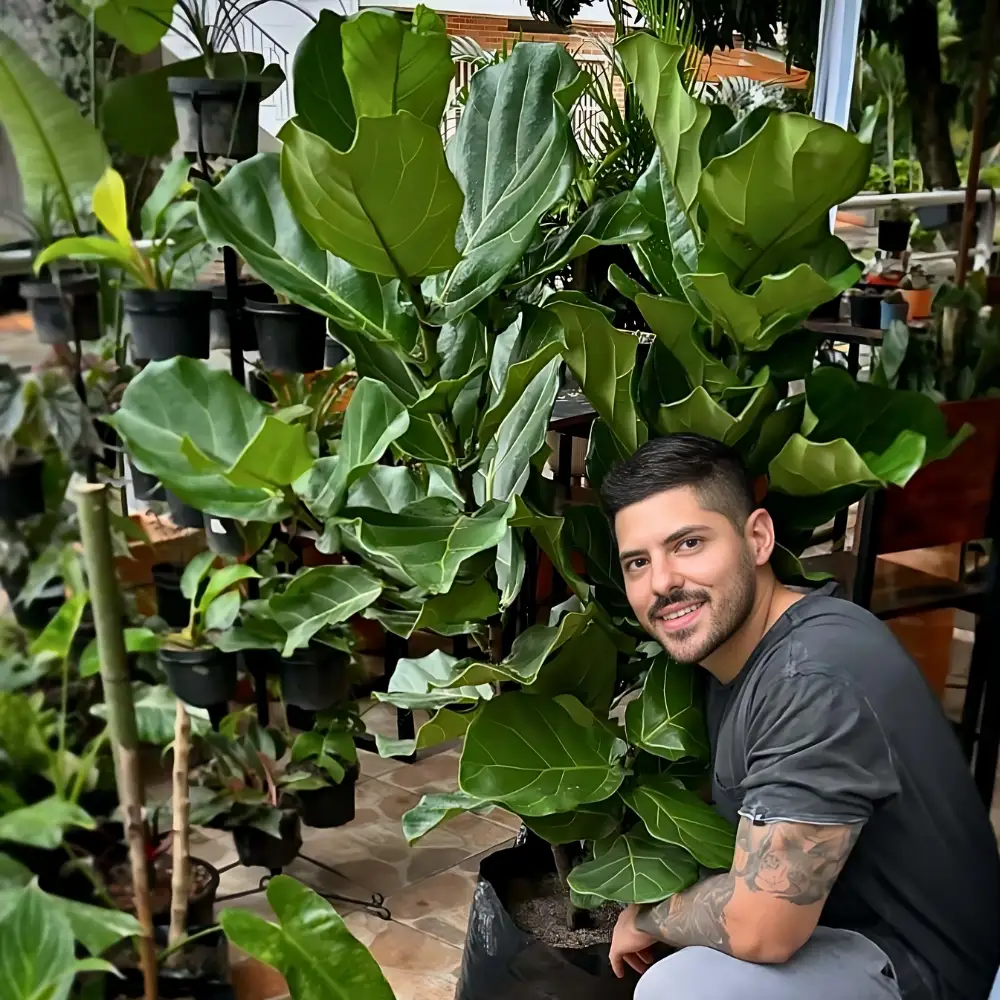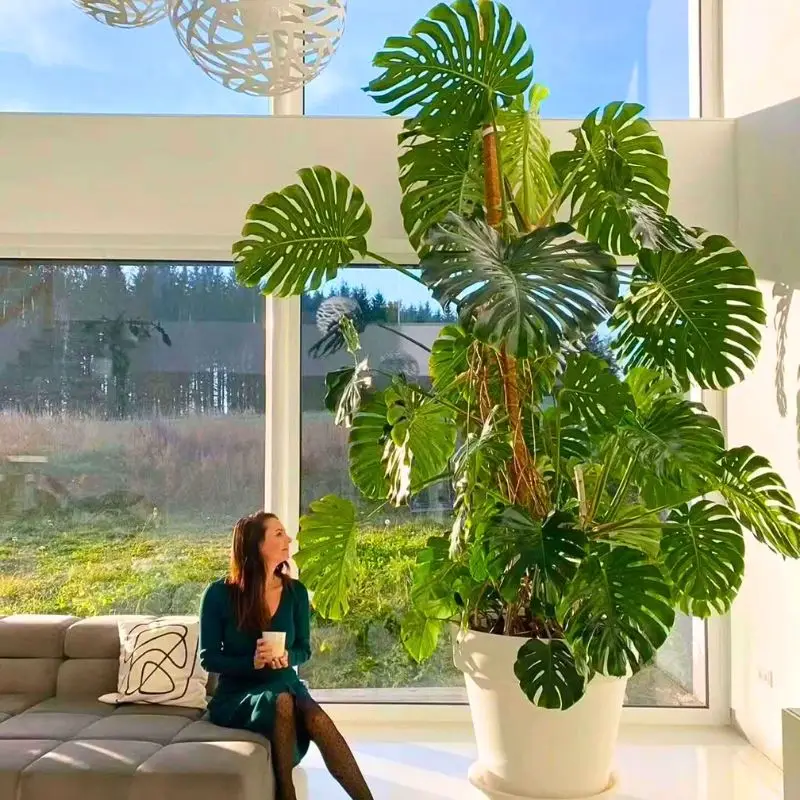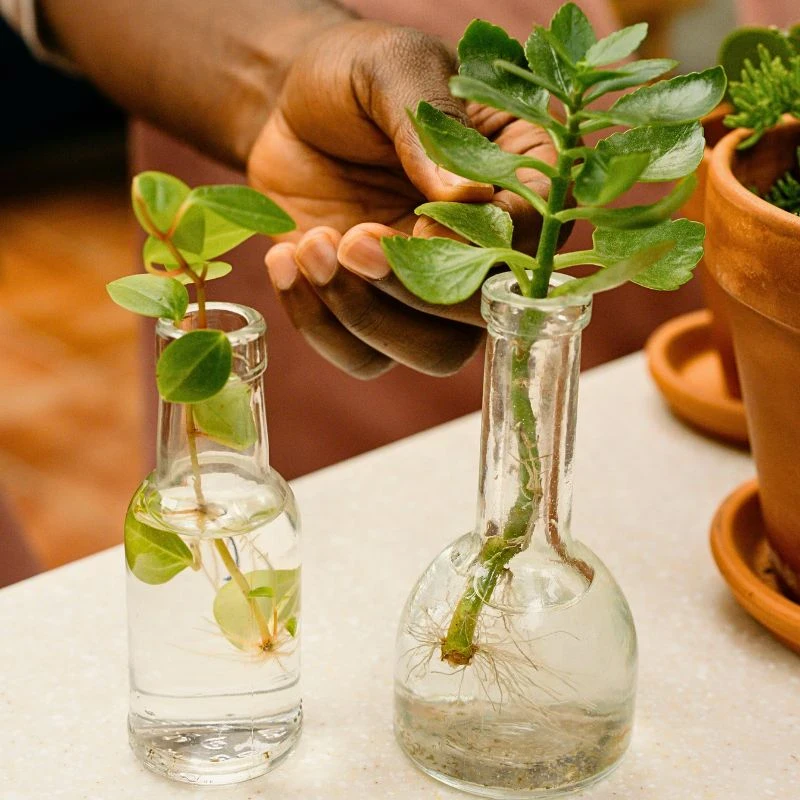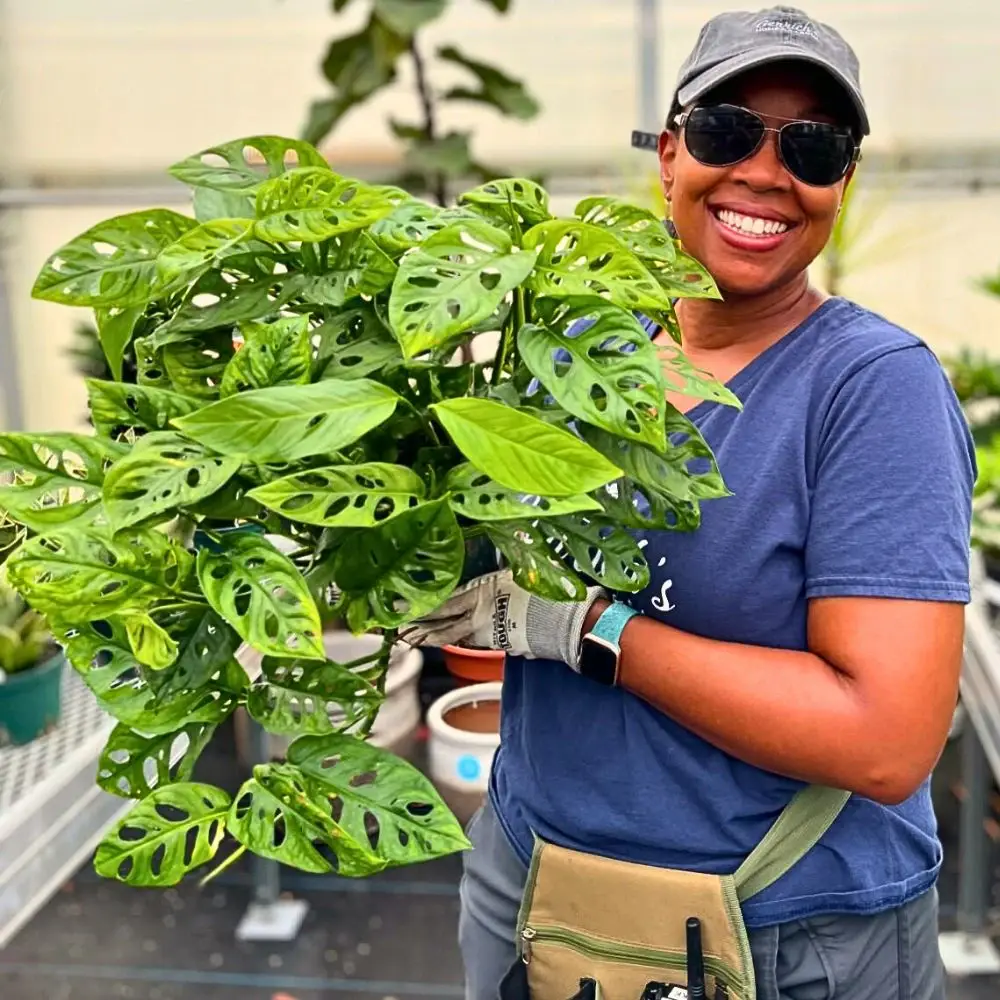Philodendron bipinnatifidum, also known as the Tree Philodendron, is a gorgeous tropical plant that's perfect for adding some greenery and positive energy to any living space.
With its lush foliage and air-purifying capabilities, this plant will enhance the aesthetic appeal of your home or tropical garden and contribute to your overall well-being. Let's explore this fascinating tropical plant further, giving you some Philodendron bipinnatifidum care tips.
Philodendron Bipinnatifidum's Vivid Leaves
Are you looking to fill a huge space with extraordinary tropical plants? Look no further than the philodendron bipinnatifidum.
The Philodendron bipinnatifidum houseplant will deliver. It also goes by Thaumatophyllum bipinnatifidum, Philodendron Selloum, Lacy Tree Philodendron, and Split Leaf Philodendron.
Although it is not suited for every home or tropical garden because of its sheer size, this tree philodendron deserves more exposure because of its beautiful, vivid, and giant green leaves and vigorous growth.
This plant is an evergreen perennial with a unique growth pattern that forms a trunk-like structure as it matures. Its remarkable adaptability and stunning, deeply lobed leaves spanning up to one meter in length are truly awesome.
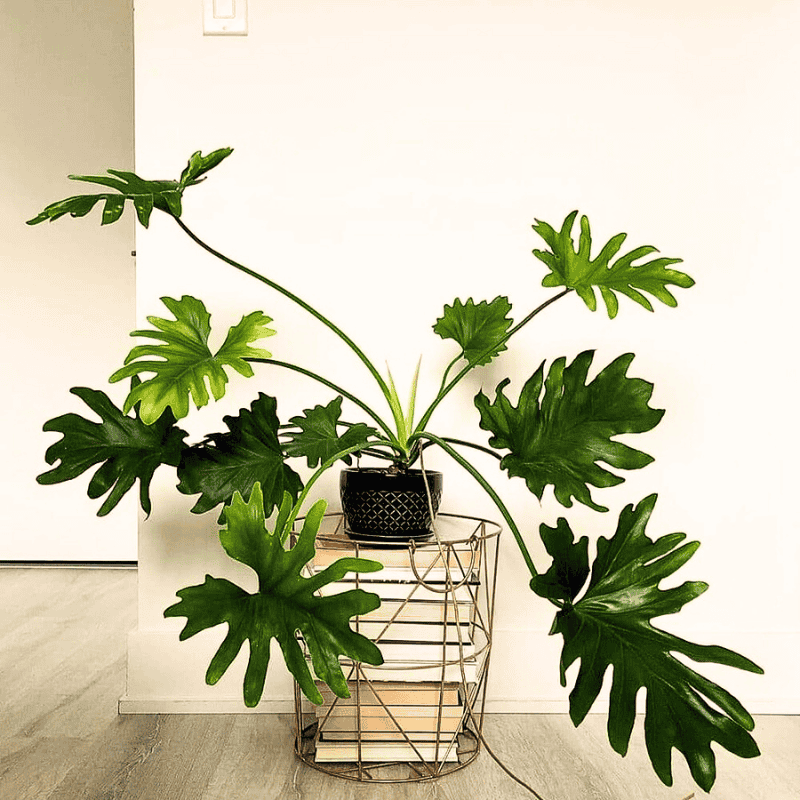
Though a bit harder to find for sale than some other more common philodendron varieties, the tree philodendron makes for a perfect statement houseplant or tropical garden filler. It is known for its fabulous, showy, wide, and welcoming leaves that have the feel of a true tropical jungle. This makes it a great choice of plant for yoga rooms as well!
Philodendron bipinnatifidum, or the tree philodendron, has been cultivated for centuries, with its introduction to Europe occurring in the early 19th century. Since then, its popularity as an indoor plant or tropical garden plant has grown steadily, thanks ot its low-maintenance nature and ability to thrive in a variety of indoor and tropical conditions. Today, it is a beloved addition to countless homes, offices, tropical gardens, and public spaces around the world.

Confusion About the Name of Split Leaf Philodendron
The world of this philodendron is wrapped in confusion. Many often confuse them with Monstera deliciosa, leading to the shared nickname, Swiss Cheese Plant. There's also a mix-up in their botanical names, with some even being from different genera. Here's the clarification:
Split Leaf Philodendrons are not Monsteras. While the name Swiss Cheese Plant typically refers to Monstera deliciosa, it's occasionally linked with the Split Leaf Philodendron, even though they're distinct species. Further adding to the confusion, some people even call Monsteras by the name Split Leaf Philodendron. While they belong to the same Araceae family, their genera are entirely different.
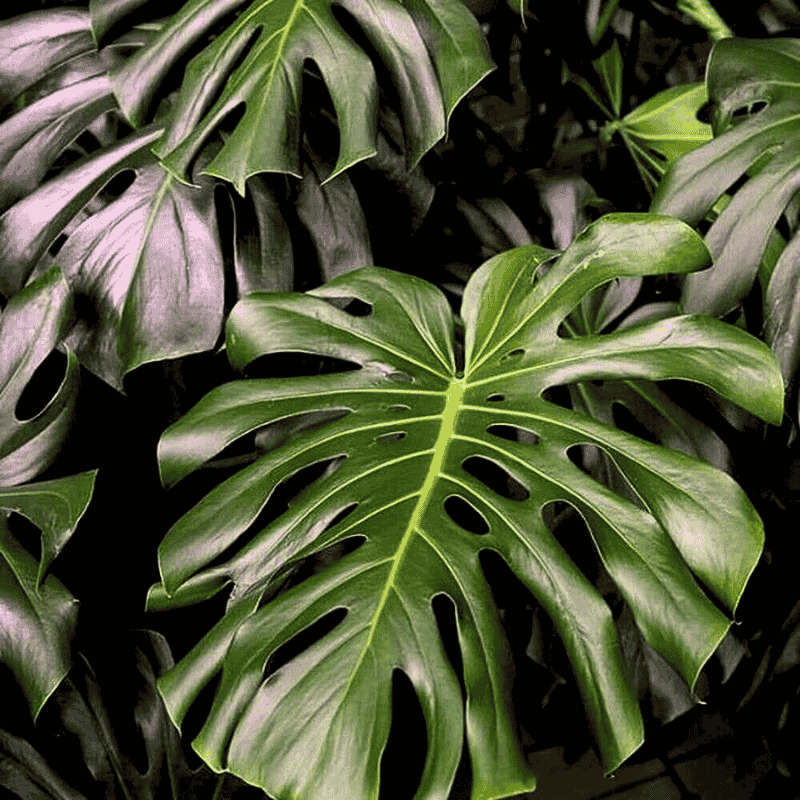
Relying on common names can be misleading, so using scientific names can often be more accurate. That said, even the botanical names for these plants can be puzzling. As per the Plants of the World Online from Key resources, the scientific moniker for Split Leaf Philodendrons is Thaumatophyllum bipinnatifidum. This means they're not in the Philodendron genus but fall under the Thaumatophyllum genus. They're considered plants of the Philodendron tribe.
However, the relationship with philodendrons persists in naming. You might often find them tagged as Philodendron bipinnatifidum or Philodendron Selloum when you visit plant shops.
But here's the takeaway: Split Leaf Philodendrons and Monsteras are distinct despite their resemblance. Contrary to some beliefs, the former isn't a philodendron variety.
How to Care for Your Philodendron Bipinnatifidum aka Philodendron Selloum?
The Philodendron Selloum, Bipinnatifidum, or Split Leaf Philodendorn is a plant that can be grown in the tropics as an outdoor plant, preferably in an area that is well-covered for the intense afternoon direct sun. Indoors, it likes a lot of light, warm temperatures and comfortable airflow. Give it enough water, some love, and a bit of fertilizer, and avoid extremes of any kind. And this plant will reward you with its beautiful appearance.
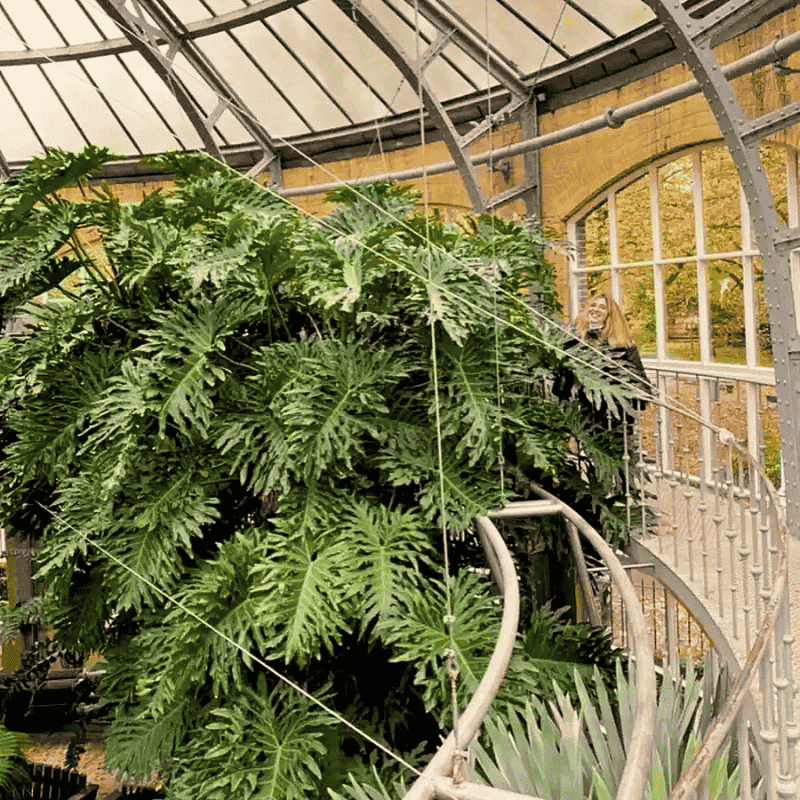
Philodendron Bipinnatifidums Light Requirements
Like most other plants in the Philodendron genus, this tree philodendron enjoys a tropical climate out of too much direct sunlight, a setup similar to that of its native habitat. The ideal indoor environment provides moderate or diffused natural light. Artifical indoor light sources that can left on for a significant period of time might work for this plant, but bright natural light is best. For best results, place your plant in an area with bright indirect light, but keep it out of too much direct sunlight, especially close toa a glass window with direct sunlight, as the leaves will burn.
In the tropics, Philodendron bipinnatifidum plants can be grown outside very easily. If you're wondering about the Philodendron Selloum outdoor care, you should know that these plants prefer bright but filtered light. They can tolerate some direct sunlight in the morning or late afternoons, but you should not only keep them constantly under the full sun since it can scorch their leaves.
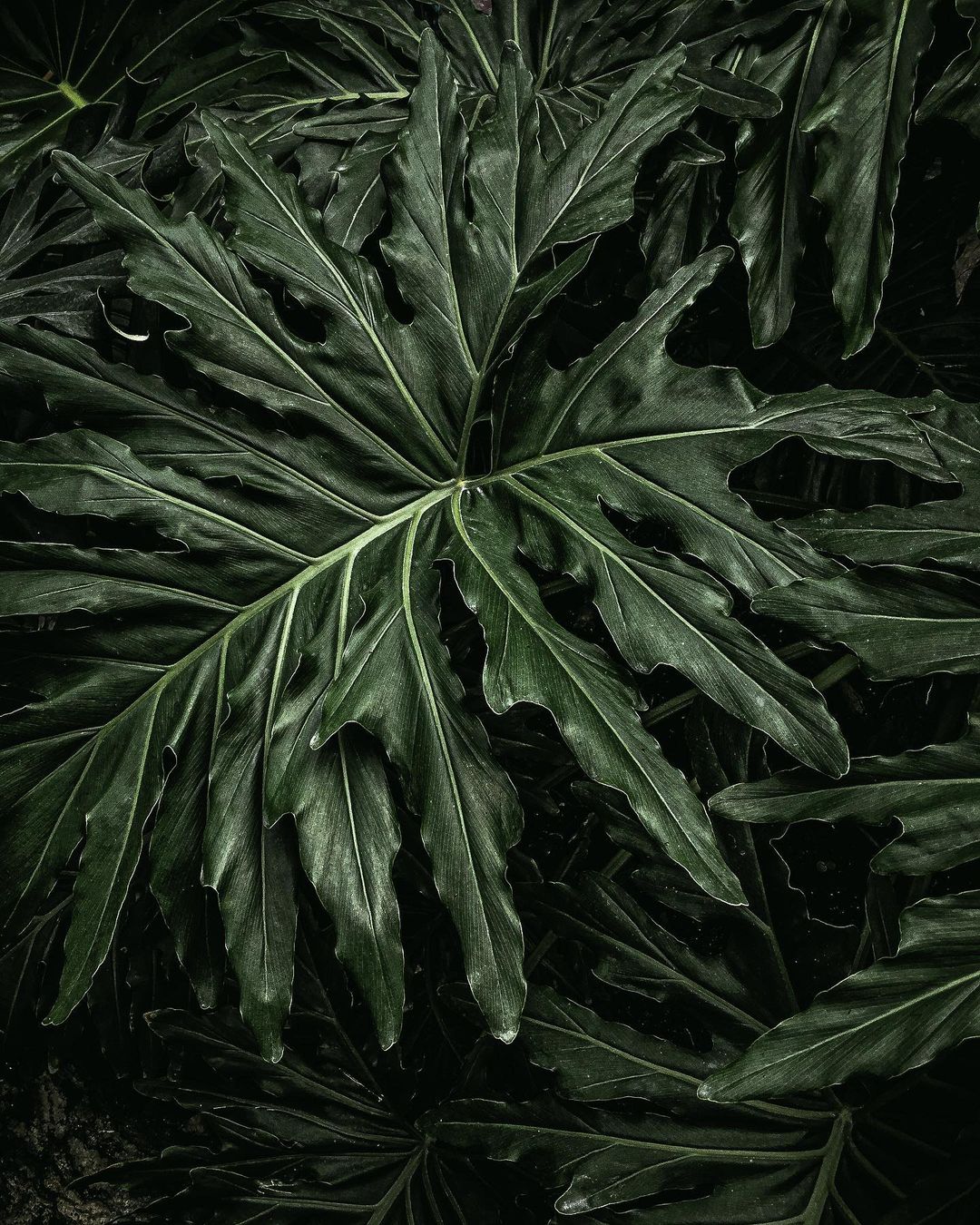
Although they are said to adapt to full shade, expect the leaves to turn a darker green if you don't give them enough light. With lower light conditions, the plant will not grow as well and as fast, and you won't be seeing any flowering or particularly showy leaves. It is recommended that you turn your houseplants regularly to give them light from all sides. This is especially important with Philodendron bipinnatifidums because of their trunks. They will turn and bend towards the light source, so make it a habit to turn the pot every time you water to avoid oddly shaped trunks.
Watering Needs of This Tree Philodendron
This Tree Philodendron loves moisture. The Philodendron bipinnatifidum has unique water requirements. While you might be used to letting the soil dry out between watering with your other Philodendron,s keep in mind this one likes more water. Ideally, it would help if you tried to keep the soil moist at all times. The keyword here is moist, not soggy. This can be achieved by watering the plant so that the water runs through the drainage holes at the bottom of the plant. Remember to avoid overwatering to prevent root issues.
How to Fertilize Your Bipinnatifidum Plant
The plant should be fertilized with light fertilizer once every few weeks during the growing season (spring and summer). As you get to know the plant, this will become easier. It is always a good idea to start with less fertilizer and increase the amount if you notice the leaves getting paler to avoid fertilizer burn.
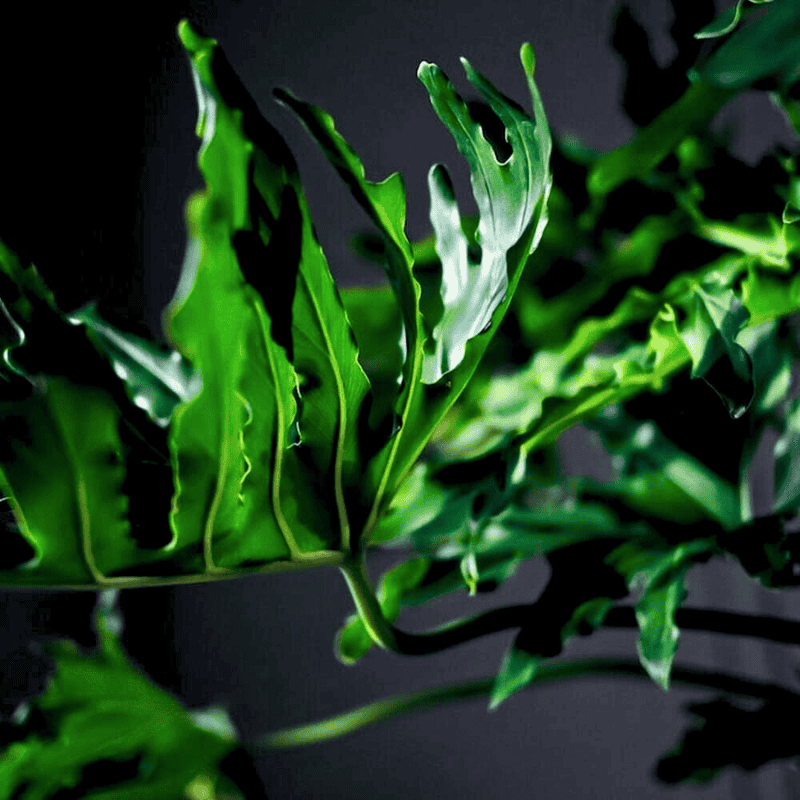
2 Reasons Why People Love Philodendron Bipinnatifidum
There's a lot of love about Philodendron bipinnatifidum. Here are some of the top reasons why this tree philodendron has won the hearts of plant enthusiasts worldwide.
Lacy Tree Philodendron Is Aesthetically Pleasing
With its large, deeply lobed leaves and striking silhouette, Philodendreon bipinnatifidum, also known as the Lacy Tree Philodendron, is a true showstopper. The glossy green foliage adds an element of sophistication to any space, making it the perfect statement piece for both minimalist and eclectic interiors. As the plant matures, its trunk-like structure lends an exotic, tropical vibe that's sure to garnder admiration from visitors.
This Tree Philodendron Has Air-Purifying Properties
Philodendron bipinnatifidum is not just a pretty face - it also boasts air-purifying capabilities. This tree philodendron is known to help remove pollutants like formaldehyde, benzene, and xylene from the air, contributing to a healthier indoor environment. With more people spending time indoors, adding a Philodendron bipinnatifidum to your space can help improve air quality and create a more refreshing ambiance.
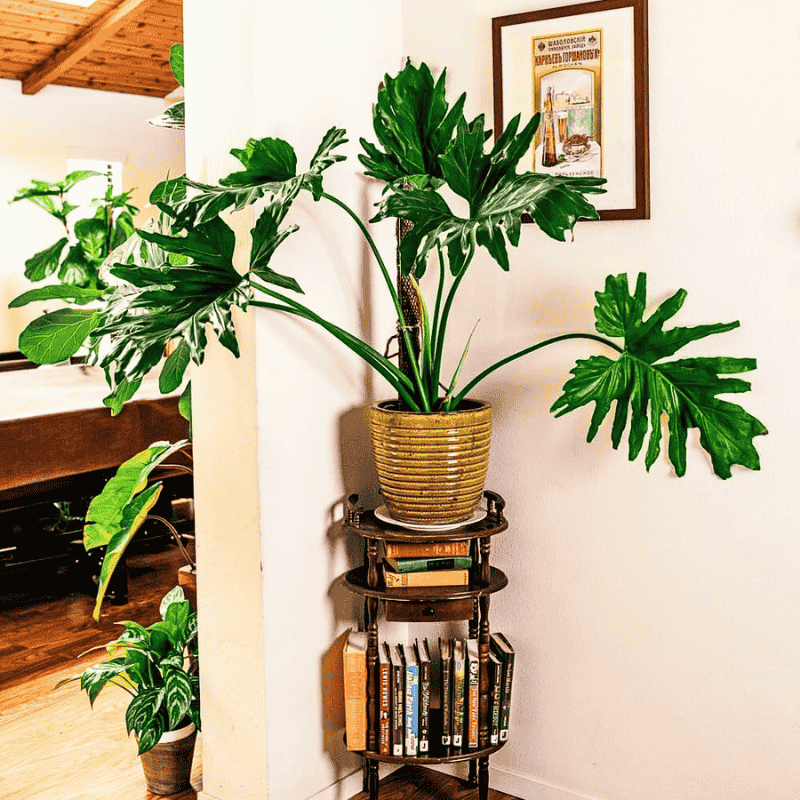
How to Propagate Your Philodendron Bipinnatifidum
Spread the plant love! If you're eager to share your love for this fantastic plant with others, propagation is the perfect solution. Propagating is a rewarding process, and doing so with your Philodendron bipinnatifidum is a great way to share the joy of this beautiful tropical plant with friends and family.
There are two popular methods of propagating this plant: stem cuttings and air layering.
Method 1: Propagating via Stem Cuttings
One of the most straightforward ways to propagate a Philodendron bipinnatifidum is through stem cuttings. Here's a step-by-step guide to help you get started:
- Step I - Choose a healthy stem: Begin by selecting a healthy, mature stem with at least one leaf. Make sure the stem is free of any signs of disease or pests.
- Step - II - Make the cut: Using a clean, sharp pair of pruning shears or scissors, cut the stem about 1-2 inches below a leaf node (the point where the leaf meets the stem). Make sure to sterilize your cutting tool before and after use to prevent the spread of diseases.
- Step - III - Prepare the cutting: Remove the lower leaves from the cutting, leaving at least one leaf at the top. This will help the cutting focus its energy on developing roots.
- Step - IV - Root the cutting: Fill a small container with a well-draining, peat-based potting mix, possibly adding some orchid bark for better drainage. Moisten the mix, and then insert the cut end of the stem about 1-2 inches deep into the soil. You can also dip the cut end in rooting hormone before planting, though this is not required.
- Step - V - Provide optimal conditions: Place the container in a warm spot with bright indirect light. Maintain consistent moisture in the potting mix, but avoid overwatering. In about 4-6 weeks, your cutting should develop roots and begin to grow new leaves.
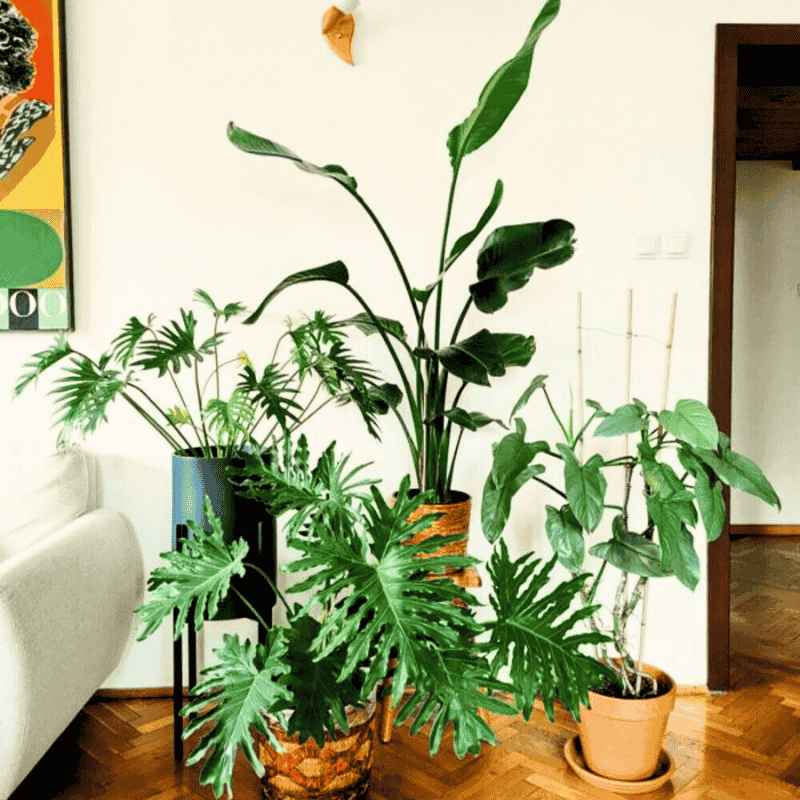
Method 2: Propagating Your Tree Philodendron via Air Layering
Air layering is another popular method for propagating Philodendron bipinnatifidum, particularly for larger specimens. This technique encourages the development of aerial roots of the parent plant before removing the new plantlet. Here's how to do it:
- Step I - Choose a healthy stem: As with stem cuttings, start by selecting a healthy, mature stem with at least one leaf. Ensure the stem is free of any signs of disease or pests.
- Step II - Make an upward slanting cut: Using a clean, sharp pair of pruning shears or scissors, make an upward slanting cut about halfway through the stem, just below a leaf node. Sterilize your cutting tool before and after use to prevent the spread of diseases.
- Step III - Insert a toothpick: Place a toothpick or small twig into the cut to keep it open, allowing the new roots to form.
- Step IV - Apply rooting hormone: Although optional, applying rooting hormone to the cut can encourage faster root development. Gently dust the cut areas with rooting hormone powder or apply a liquid rooting hormone using a cotton swab.
- Step V - Wrap the cut in moist sphagnum moss: Soak sphagnum moss in water, then squeeze out the excess moisture. Wrap the moist sphagnum moss around the cut, making sure it is entirely covered.
- Step VI - Cover with plastic wrap: Secure a piece of clear plastic wrap around the sphagnum moss, making sure it is tightly sealed to maintain moisture. Secure the plastic wrap with twist ties, string, or rubber bands.
- Step VII - Wait for roots to develop: Place the parent plant in a warm spot with bright indirect light so that it can photosynthesize efficiently. Keep an eye on the moss, making sure it remains moist. In about 4 to 6 weeks, you should see new roots forming inside the plastic wrap.
- Step VIII - Remove and pot the new plantlet: Once roots have formed, remove the plastic wrap and carefully cut the stem just below the roots of the new plants. Pot the new plantlet in a small container with a well-draining, peat-based potting mix.
By following these simple steps, you can propagate your Philodendron bipinnatifidum and share the joy of this beautiful tropical plant with friends and family. Not only will you brighten their living spaces, but you'll also contribute to a greener, more vibrant world. Happy propagating!


